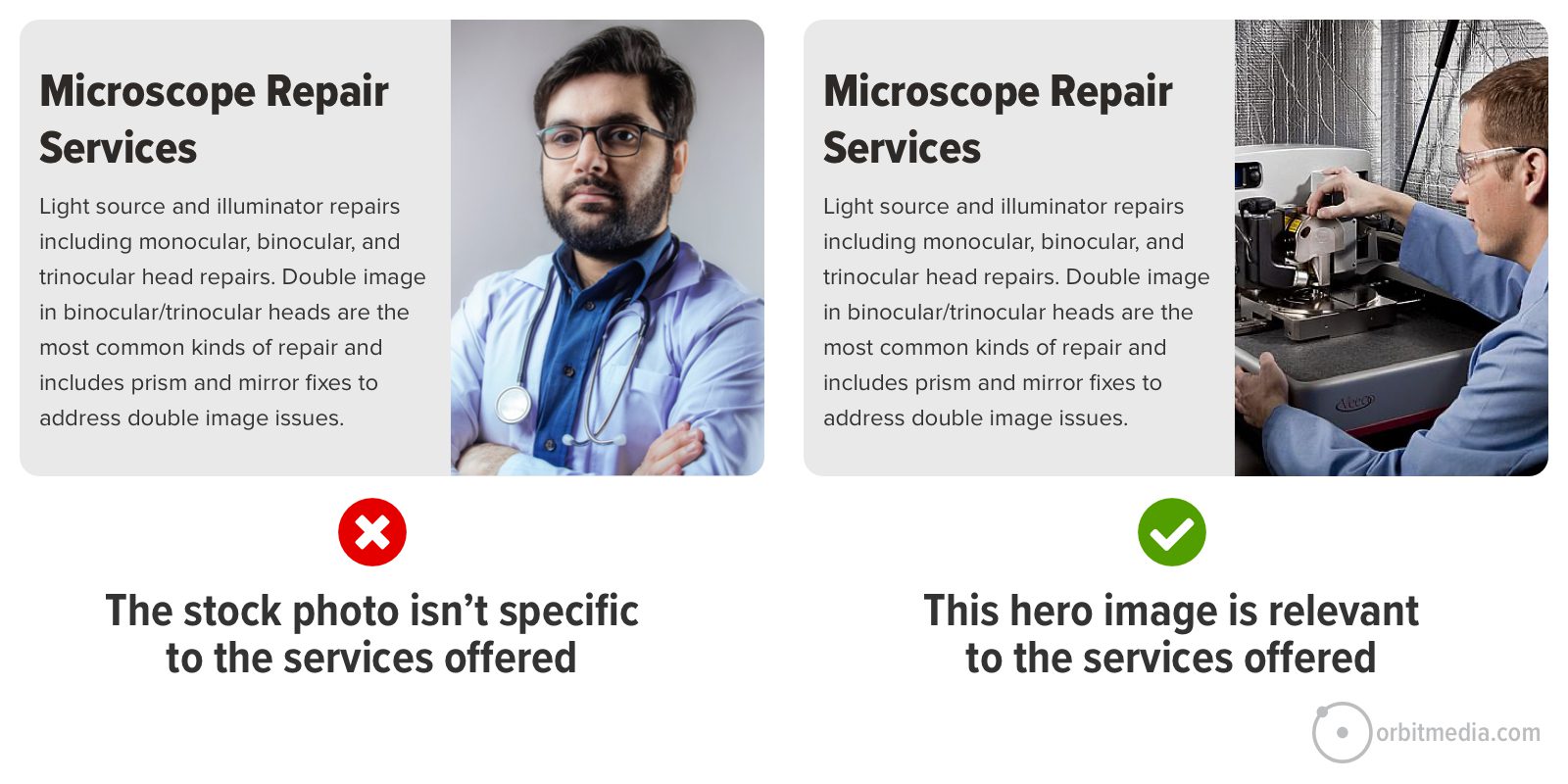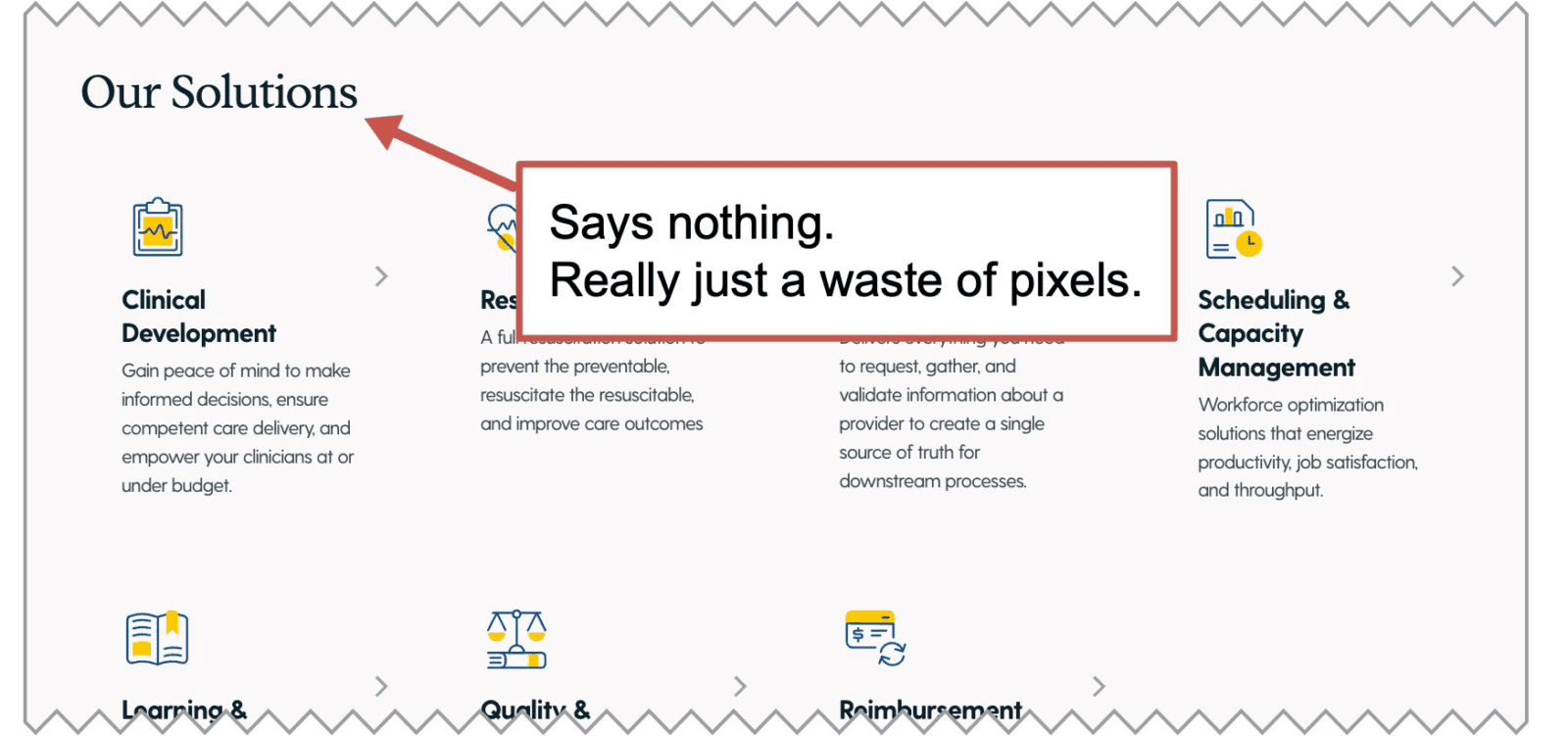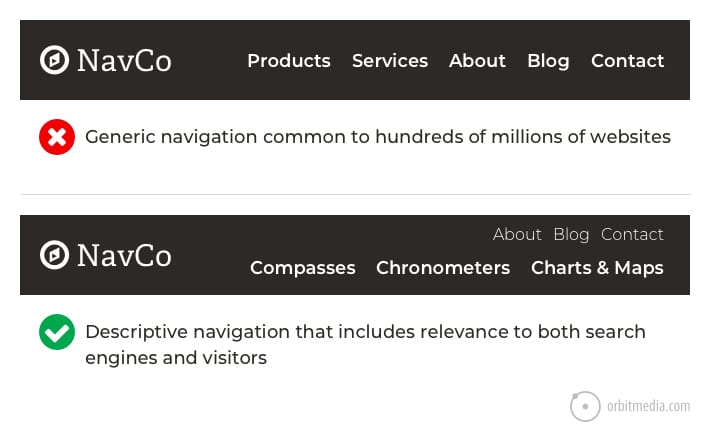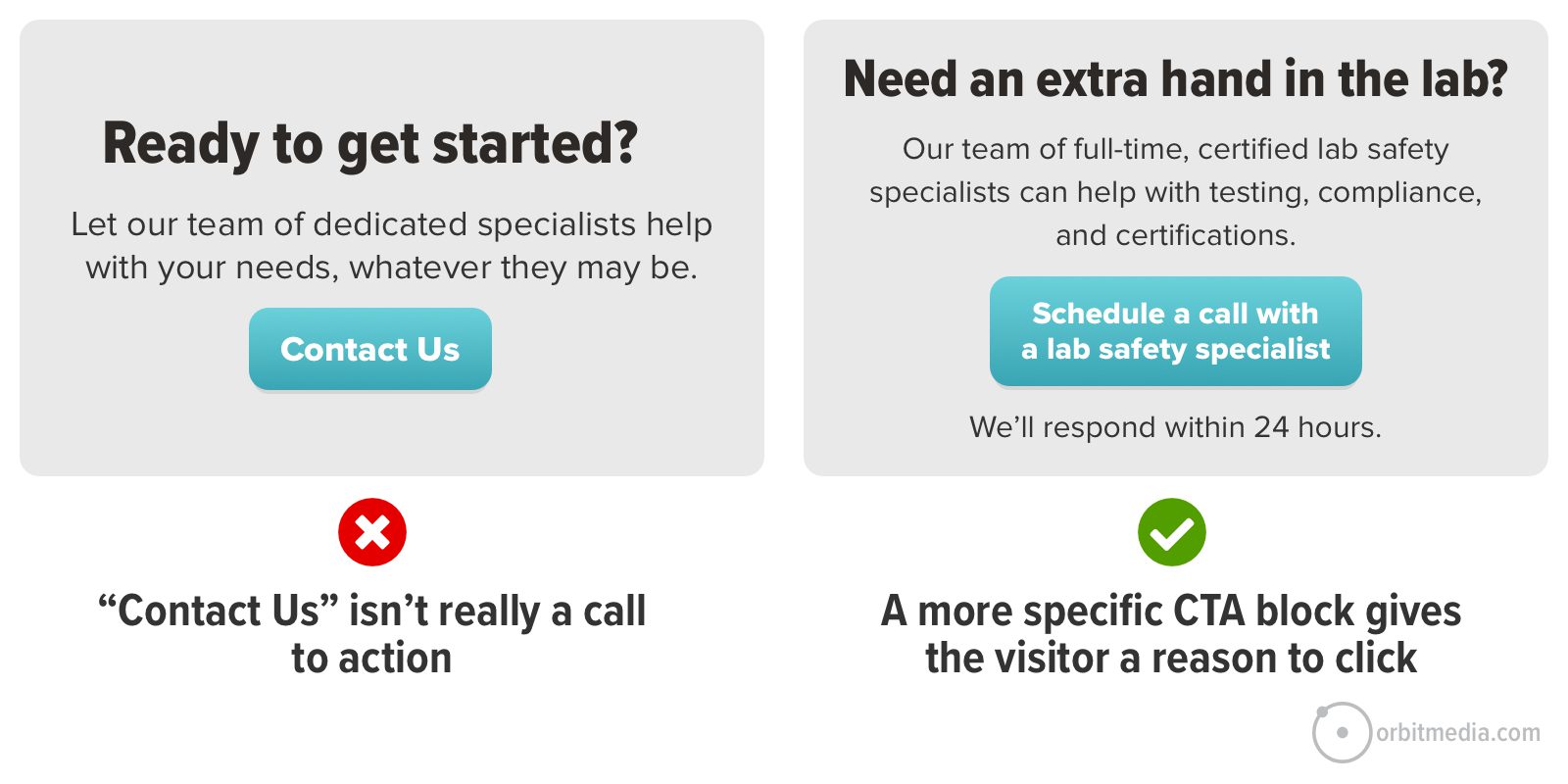[ad_1]
“I can’t convey to what this corporation does”
“Some form of advertising and marketing website”
“Unsure”
“No idea”
These are all popular responses to the 5-2nd examination, in which we use an on the web instrument to exhibit a homepage to a group of consumers, and then ask “What does this corporation do?”
When we present the outcomes of these checks to clients, absolutely everyone feels urgency to correct the issue. And the concepts often emphasis on building the internet site additional descriptive. Add clarity.
The key is very simple: specificity.
The far more certain some thing is (headers, navigation, visuals, CTAs) the much more likely it is to join with the visitor. Bonus: it also tends to make the page a lot more probably to rank in look for engines.
We all want our sites to talk rapidly and evidently, serving to our website visitors know if they’re in the ideal position. Competent guests dig deeper. Right here are X spots you can be far more particular and make a improved site.
1. Publish descriptive
headers
We’ll start out with the header since it is usually at the leading of the visible hierarchy.
Certainly, every web page (in fact, each scroll depth on each individual site) has a visible hierarchy. A person aspect is the most well known, attracting the visitor’s consideration very first. A second component arrives up coming in the hierarchy, so their eyes transfer there next, and so on down the site.
Developing and running the visual hierarchy is the critical to internet style and design and usability.
The
header is normally at the top of that hierarchy, so we’ll commence there. If it is generic, obscure and tedious, which is bad. If it is distinct and descriptive, that is fantastic. You will go the 5-next examination.
The change is huge. And it is an quick prospect to seize. Updating your homepage header much more descriptive may well take significantly less than 5 minutes. If internal stakeholders push again, convey to them it’s just a check (all changes are, seriously) and that you will improve it back if it doesn’t execute properly.
Apparent is a lot more essential than intelligent in headers. The most visually notable thing must also be the practical and compelling detail. In any other case, the customer has to dig.
2. Use a applicable hero image
Also in the vicinity of or at the prime of the visual hierarchy is the showcased region picture. If the header is distinct, then the picture does not have to perform as tough. The customer might already know they are in the correct location. But it’s nevertheless an possibility to be precise.
A pertinent and unique graphic tells them that they are in the right put. A inventory picture normally does almost nothing for your user’s experience. It preferences like water.

Consider a glance at that image at the major of your homepage. Question oneself if it’s specific to your small business, or generic to thousands and thousands of companies.
The hero graphic doesn’t have to have to be a photo at all. From time to time a texture or looping track record video. These are good selections that minimize the prominence of that factor. The visitor receives clarity from other features.
Other situations, the hero spot is the best place to display the products in context (example), display the group (illustration) or point out the system and the success (illustration).
3. Rewrite (or take away) generic subheads
The subhead is often the most visually well known aspect at that scroll depth. The visitor is really most likely to see it as they scan down the website page. So it should be compelling, precise and descriptive.
Subheads that are generic normally take up space without including any worth at all. They simply just press down the rest of the webpage. When hunting at any of your subheads, check with you if the web page wouldn’t be just as excellent if you removed it entirely.
“What we do” doesn’t actually say what you do. It is not helpful. “Our solutions” is just as lousy.

Subheads are an chance to place some thing suitable and handy into watch for the visitor. The most effective subheads are particular to your small business. They talk immediately, introducing price to the expertise of the visitor.
Testimonial subheads are a superior illustration. The subhead “What customers say about us” doesn’t essentially clearly show what customers say. Far improved to use the subhead to showcase a compelling section of a testimonial.

In the initially illustration over, the visitor is not probably to study individuals tremendous powerful text in the testimonial. The most persuasive point is the least visually prominent point. In the 2nd example, the customer is quite very likely to read that portion of the testimonial, mainly because the visual hierarchy aligns with the messaging priorities.
Make sense?
4. Use descriptive navigation labels
An additional possibility to be certain (or super generic and obscure) is in the major menu. The navigation bar is often in the vicinity of the top of the visual hierarchy. Most readers scan the primary menu first, even just before scrolling at all.
So the navigation labels are really vital. Certain, descriptive nav labels are part of web site navigation most effective techniques. They tell the visitor that they’re in the proper place. They also assistance the visitor segment by themselves into deeper internet pages with much more specific content material.

Labels such as answers, solutions, merchandise and industries are generic, obscure and unhelpful. Basically, any small business could use these.
Scan by means of your site navigation and question oneself: Are these labels precise to our business enterprise? Or are they common to millions of companies?
Of program, major organizations with several gives could have a very good purpose to use generic labels at the prime level of the navigation. It would make feeling. But even huge companies can be extremely distinct in the sub-navigation labels in their mega menus.
5. Publish calls to action that give them a reason to click
Finally, we get down to the CTA. These times, it is normally presented its personal webpage block in the vicinity of the bottom of the page. That is excellent. It justifies its very own real estate.
But how precise is your CTA? Is it suitable to your business enterprise, or generic to all corporations?
Compare the variation involving these two examples. The to start with is generic and widespread to each and every web site on the web. The second is specific to the customer. It presents them a rationale to click on.

Glance closely at the verbs on your site. Verbs are section of the key to high clickthrough price buttons. Some calls to action have popular verbs like get hold of, read through, understand and click on. Great CTAs have specific verbs like program, chat, verify, obtain and look at.
Remember, no a single clicks anything at all until eventually they’ve finished a break up-2nd price tag/profit assessment. You can enhance the clickthrough charge of anything by making the perceived value lesser or the profit bigger.
So why do marketers use obscure language?
Specificity correlates with engagement and conversion.
Specificity also correlates with look for rankings.
So if applying unique, descriptive language is good for both equally the cheese (traffic) and the mousetrap (conversion), why is imprecise language so typical on web-sites?
The most important rationale is fear.
Entrepreneurs are typically fearful of excluding one particular of their audiences. They want to address quite a few distinct marketplaces. To do so, they h2o down their language. Ironically, they stop up excluding anyone simply because the site does not link with any person.
Let’s question Doug. If you never know Doug, here’s my regular introduction: Doug Kessler is your favourite writer’s preferred writer. He’s that excellent. And he has an explanation for vague duplicate:
 |
Doug Kessler, Velocity Companions“The urge to test to be all items to all men and women is so solid it is pretty much the default placing for internet marketing groups. Excluding a potential customer (no matter how unlikely it is that they in fact do buy) just feels erroneous to entrepreneurs. And it can be difficult to convince stakeholders (particularly voracious sales carnivores) that laser-concentrating only on suitable potential customers is basically a greater system. The all items to all persons frame of mind qualified prospects to fuzzy, flabby, cheapest common denominator copy that just doesn’t resonate with any person.” |
Doug also shares an case in point. Suppose you have two audiences with excellent messages for every. For example, if you function with insurance policies brokers and financial commitment bankers, you can produce robust price propositions for every single. But check out producing just one that is effective for both of those. It’s doomed to be obscure.
Of course, homepages are tough for the reason that they want to talk to every single viewers, but perform difficult on all those inside webpages. And for some brands, the problem is positioning, not copywriting. If the manufacturer is truly hoping to be everything to all people, it will hook up with no a single.
No amount of proficient producing can save the “solutions provider” who is unwilling to specialized niche down.
[ad_2]
Supply connection









